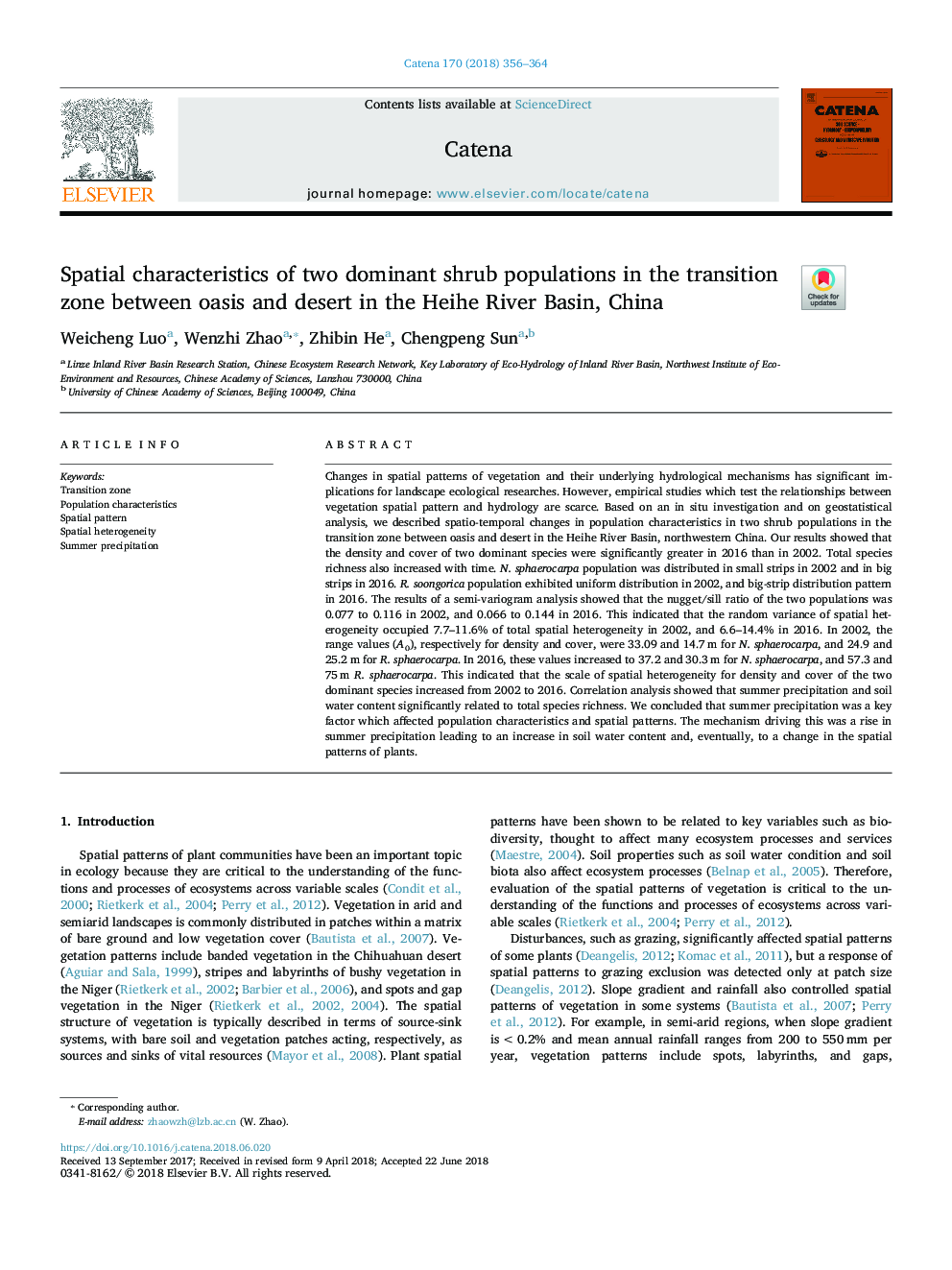| کد مقاله | کد نشریه | سال انتشار | مقاله انگلیسی | نسخه تمام متن |
|---|---|---|---|---|
| 8893432 | 1629184 | 2018 | 9 صفحه PDF | دانلود رایگان |
عنوان انگلیسی مقاله ISI
Spatial characteristics of two dominant shrub populations in the transition zone between oasis and desert in the Heihe River Basin, China
ترجمه فارسی عنوان
خصوصیات فضایی دو جمعیت حشرات غالب در ناحیه انتقال بین وحشی و بیابان در حوضه رودخانه هایه،
دانلود مقاله + سفارش ترجمه
دانلود مقاله ISI انگلیسی
رایگان برای ایرانیان
کلمات کلیدی
منطقه انتقال، مشخصات جمعیتی، الگوی فضایی، ناهمگونی فضایی، بارش تابستان،
موضوعات مرتبط
مهندسی و علوم پایه
علوم زمین و سیارات
فرآیندهای سطح زمین
چکیده انگلیسی
Changes in spatial patterns of vegetation and their underlying hydrological mechanisms has significant implications for landscape ecological researches. However, empirical studies which test the relationships between vegetation spatial pattern and hydrology are scarce. Based on an in situ investigation and on geostatistical analysis, we described spatio-temporal changes in population characteristics in two shrub populations in the transition zone between oasis and desert in the Heihe River Basin, northwestern China. Our results showed that the density and cover of two dominant species were significantly greater in 2016 than in 2002. Total species richness also increased with time. N. sphaerocarpa population was distributed in small strips in 2002 and in big strips in 2016. R. soongorica population exhibited uniform distribution in 2002, and big-strip distribution pattern in 2016. The results of a semi-variogram analysis showed that the nugget/sill ratio of the two populations was 0.077 to 0.116 in 2002, and 0.066 to 0.144 in 2016. This indicated that the random variance of spatial heterogeneity occupied 7.7-11.6% of total spatial heterogeneity in 2002, and 6.6-14.4% in 2016. In 2002, the range values (A0), respectively for density and cover, were 33.09 and 14.7â¯m for N. sphaerocarpa, and 24.9 and 25.2â¯m for R. sphaerocarpa. In 2016, these values increased to 37.2 and 30.3â¯m for N. sphaerocarpa, and 57.3 and 75â¯m R. sphaerocarpa. This indicated that the scale of spatial heterogeneity for density and cover of the two dominant species increased from 2002 to 2016. Correlation analysis showed that summer precipitation and soil water content significantly related to total species richness. We concluded that summer precipitation was a key factor which affected population characteristics and spatial patterns. The mechanism driving this was a rise in summer precipitation leading to an increase in soil water content and, eventually, to a change in the spatial patterns of plants.
ناشر
Database: Elsevier - ScienceDirect (ساینس دایرکت)
Journal: CATENA - Volume 170, November 2018, Pages 356-364
Journal: CATENA - Volume 170, November 2018, Pages 356-364
نویسندگان
Weicheng Luo, Wenzhi Zhao, Zhibin He, Chengpeng Sun,
